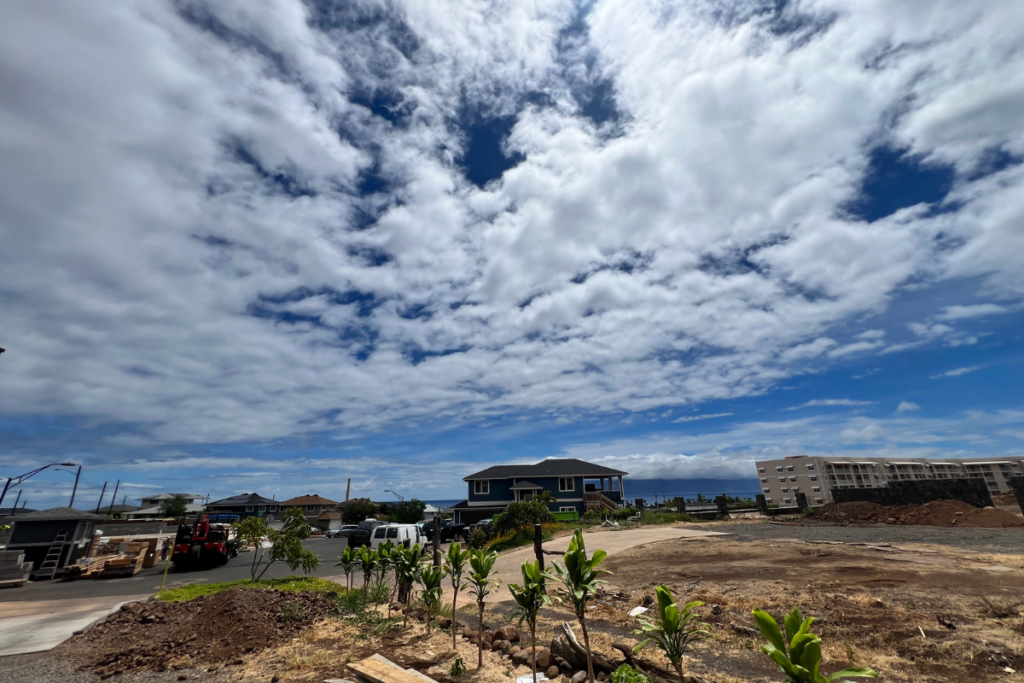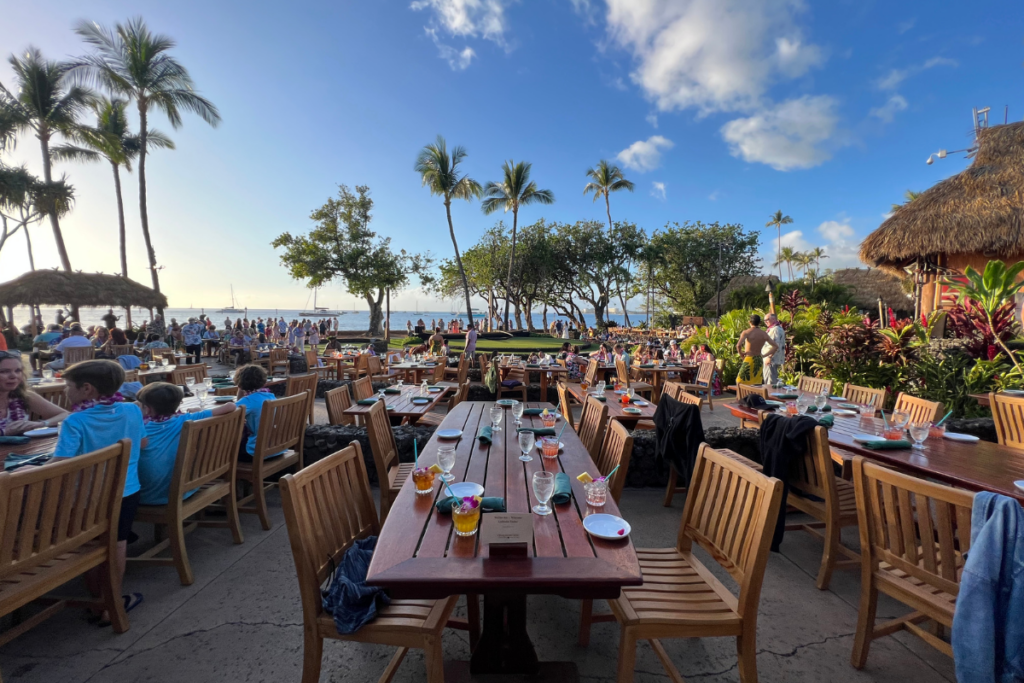Two years after the fire that destroyed Lahaina, recovery is uneven and deeply layered. In some places, residential areas are construction zones; in others, families are back in their homes and returning to normalcy. Local businesses that were once in Lahaina are reopening across the island. Maui County has rolled out housing programs to aid survivors, a new fire station is set to go up in Olowalu, and long-term plans for the town’s future are starting to take shape.
And yet the community is still grieving. Financial assistance is running out for many, if it hasn’t already. And downtown Lahaina remains closed to the public. Many have spoken out against visitors and companies that treat the burn zone like a tourist attraction. Disagreements over new legislation have been heated and any new evacuation orders—like the tsunami warning issued in July—bring more trauma for the people who live here. Distrust and fear linger.
There is hurt and hope, pain and celebration—all coexisting in a town that’s still learning how to heal.
A Patchwork of Progress
Looking down Komo Mai Street from her newly rebuilt Lahaina home, Stephanie Evans reflects on life before the fire—and the serendipitous timing of her move-in, just over a week before the second anniversary of that tragic day.
The rebuilding of her neighborhood looks less like progress and more like patchwork. Homes are in every stage: Some are already occupied, others have just framing or foundation. And then there are the many empty lots slowly being reclaimed by greenery.

Photo: Ashley Probst
It feels reflective of each Lahaina resident’s individual healing journey: Some have found a sense of stability, others are still doing the work; many haven’t even been able to begin or were forced to leave before they could.
According to Maui Recovers, as of July 28, only 44 homes in Lahaina and Kula had been deemed ready for habitation and another 275 were under construction. In total, 455 building permits, both residential and nonresidential, have been issued for construction that’s yet to be completed; another 326 permit applications are still being processed.
“Even if it’s not fully done … if we don’t start coming back, it won’t ever feel like a town again,” Evans says.
“The first night I’m back in here will be emotional,” adds the single mom of two. “I’m just excited to lay in the bed with the boys and to have our first night cozy at home and feeling safe. But that was another thing—I’m like, ‘Am I gonna feel the fear that I felt when the winds came that day?’”
That sense of unease is part of the community trauma the collective continues to carry. This was especially apparent during tsunami evacuations on July 29, when drivers went off-road to bypass gridlocked traffic.
Although moments of fear still arise, Evans says true recovery will simply take more time. And having a place to call home is the start of stability.
“I’m just so happy to have a house,” Evans says. “We’re mourning the loss of everything—the town and the people and all the things—but knowing I’m going to do that with my community this year, it feels different than being displaced.”
Business, But Not as Usual
While homeowners gradually return to Lahaina, they’re settling into a town that feels like a shell of its former self. What was once a vibrant stretch of shops, restaurants and cultural landmarks now exists in fragments.
Thankfully, well-loved businesses are reappearing across West Maui. Iconic spots like Old Lāhainā Lūʻau and Aloha Mixed Plate offer a sense of normalcy and nostalgia, even as the town around them evolves. Other longtime favorites are reopening in new locations as downtown Lahaina is reimagined, the local landscape reshaped.

Photo: Ashley Probst
For surf school owner Scott Kirby, the loss of his Front Street shop was something he never could have imagined 15 years ago, when he opened Outrageous Surf.
“The fire completely destroyed my business,” Kirby says. “All the boards, all the equipment—everything was destroyed. And then we didn’t have work … because nobody visited the island for the first six months.”
Most Maui businesses were impacted by this sharp drop in tourism. The Small Business Development Centers estimates the island saw an average of 50,000 fewer visitors each month in the year following the fire. According to the Hawaiʻi Tourism Authority, the slowdown in visitors resulted in $1.5 billion in lost revenue during the first eight months after the fire.
Kirby is also one of many business owners still operating without a physical space. Instead of opening a new storefront, he runs everything online. And he stacks the back of his truck with surfboards, each of them refurbished by hand, before meeting students at Ukumehame Beach Park.
“I didn’t really have any money to buy new boards because I didn’t get anything from anybody,” Kirby says, expressing frustration over the lack of support for those who didn’t qualify for aid or benefits.
“We didn’t think we were going to be here because, for months, we had nowhere to live and no money to move anywhere—the walls started [closing] in,” he adds.
Today, he has a home and steady flow of business, but Kirby reflects the feelings of many in the community who remain wary, skeptical of others’ intentions, and unsure of what the future holds.
“Without Lahaina being there, the West Side is pretty much [screwed] for a while,” he says.
Holding On to Hope
Some, like Kanamu Balinbin, still have hope for Lahaina’s resurgence. A third-generation Lahaina resident of Hawaiian-Filipino descent, Balinbin has been a key organizer and community leader at the S-Turns resource hub, which has since moved to the Lahaina Civic Center with occasional pop-ups at the distribution center’s original beachfront location.
“I’ve seen our community come together, all different nationalities come together and work together for a common goal—that’s what really keeps us going,” Balinbin says. “No matter who you were, everybody needed help, and everybody just took care of each other. It’s still going on right now.”

Photo: Ashley Probst
He’s also noticed a rise in civic engagement, especially among younger generations who are becoming more active in shaping Maui’s future. This includes members of the Lahaina Strong organization who are advocating for the Maui County Council to approve legislation that would phase out 7,000 vacation rentals in areas already zoned for long-term residential apartments.
Balinbin hopes to tackle the housing crisis and is currently helping to plan a 154-unit affordable housing development that includes three- and four-bedroom houses, condos, a community center, and farming space—a vision shaped by local needs.
As for visitors to the island, all three West Maui residents agree that compassion and respect are key.
“Come with a sense of gratitude and aloha,” Balinbin says. “One common misrepresentation is that we don’t like tourists. We don’t like rude tourists. … I just want people to be mindful.”
Amid ongoing short-term rental controversy, Balinbin encourages visitors to be intentional about the property owners they choose to support.
Alternatively, he suggests avoiding rentals entirely. “If it’s your first time here, the hotels are where you get the whole experience,” he says.
Evans urges visitors to show aloha in other tangible ways, such as tipping fire survivors generously or donating to local families—whether it’s money, leftover beach gear, or time spent helping with the recovery.
“Show them love in whatever way you can,” Evans says.
Ashley Probst is a contributor to HAWAIʻI Magazine. Born and raised in Lahaina, she has deep roots in the Maui community. Her writing highlights travel tips, award-winning restaurants, outdoor adventures and hidden gems across the Valley Isle. Last year, she shared a reflection on losing her childhood home and hometown to the fires.



